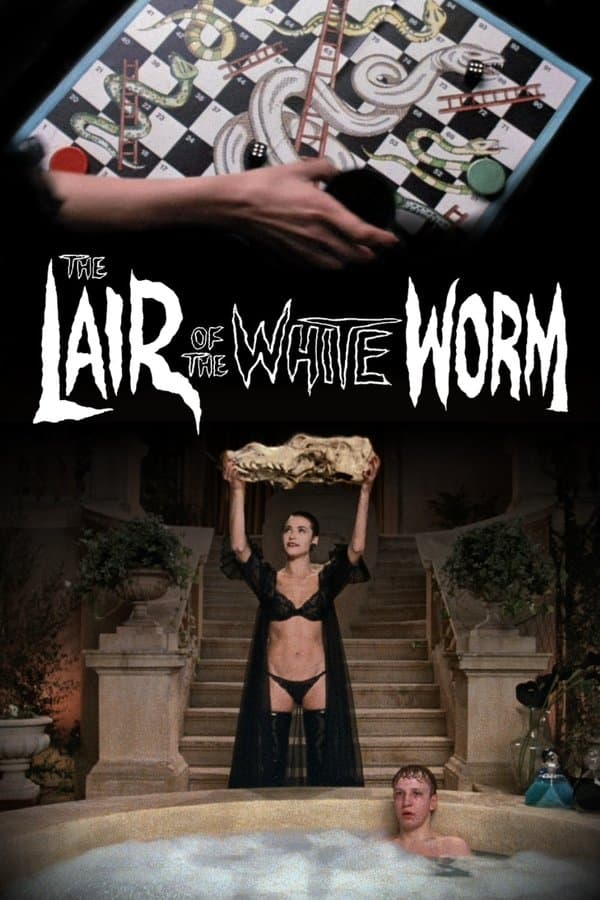
The Lair of the White Worm
1988 • Comedy, Horror • R
When an archaeologist uncovers a strange skull in a foreign land, the residents of a nearby town begin to disappear, leading to further inexplicable occurrences.
Runtime: 1h 33m
Why you should read the novel
Bram Stoker’s 'The Lair of the White Worm' beckons with mysterious folklore, ancient evil, and psychological suspense that unfold on the page far more richly than on the screen. The novel’s narrative immerses readers in subtle unease and creeping dread, inviting the imagination to conjure horrors that thrive in the shadows of English legend. Exploring Stoker’s original text means engaging with all its gothic intricacies, thematic ambiguity, and period atmosphere—elements often lost in cinematic spectacle.
By reading the novel, you access the full measure of Stoker’s craftsmanship in crafting gradually building tension and eerily developing characters. The book’s pace allows for a deeper investment in the story’s escalating sense of menace and perplexity, as ancient myths threatingly intersect with modern sensibilities. The prose encourages personal interpretation of bizarre occurrences, creating a lingering sense of doubt and fear that’s hard to replicate visually.
Moreover, 'The Lair of the White Worm' stands as a testament to the literary horror tradition, inviting readers into a world where supernatural terrors are woven with psychological obsessions and moral ambiguities. The pleasure of unraveling Stoker’s gothic mystery, with all its atmospheric detail and unsettling implications, is best experienced through his evocative storytelling. Choosing the novel means choosing an immersive, imaginative journey into one of gothic fiction’s more enigmatic works.
Adaptation differences
Ken Russell’s film adaptation takes significant liberties with the source material, transforming Stoker’s understated and ambiguous horror into over-the-top, campy spectacle. The movie amplifies elements of sexuality, black comedy, and lurid surrealism, presenting a vision that is far from the novel’s gothic subtlety. While the book weaves its supernatural premise with restraint, the film embraces shock and flamboyance, completely altering the tone and the viewing experience.
The characterization also differs greatly. In Stoker’s novel, characters are more sober, reflective, and occasionally ambiguous in motive, fitting the slow-burn gothic narrative. The film introduces flamboyant and sometimes exaggerated personas, turning the central villain into a seductive, almost otherworldly figure, and boosting minor characters to larger-than-life roles. These changes shift the story from nuanced psychological terror to phantasmagoric entertainment.
Plot elements are significantly altered or invented for the adaptation. The movie streamlines and changes relationships, invents new scenes of violence and sensationalism, and reimagines the ancient evil at the heart of the story. Major thematic explorations of anthropology, mythology, and Victorian rationalism found in the novel are largely replaced by visual shocks and comic horror, losing much of the book’s thematic richness.
Finally, the sense of place and time is shifted. Stoker’s novel is deeply rooted in the rural English landscape and draws heavily on local folklore and period anxieties. Russell’s film, meanwhile, becomes a contemporary and almost timeless phantasmagoria, with setting and context playing a lesser role. This further distances the adaptation from the source, offering a very different, and considerably less nuanced, interpretation of Stoker’s chilling narrative.
The Lair of the White Worm inspired from
The Lair of the White Worm
by Bram Stoker









